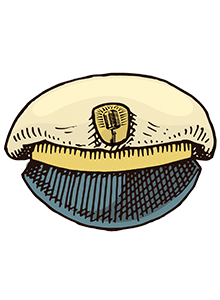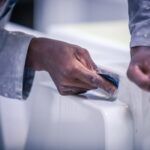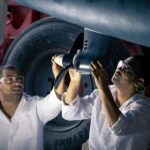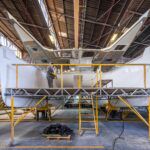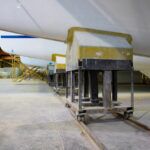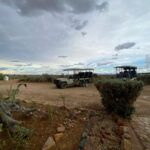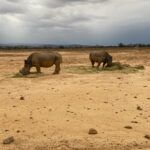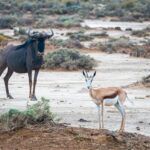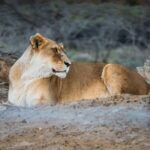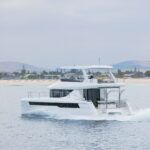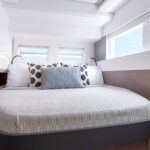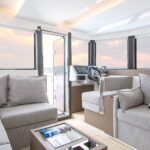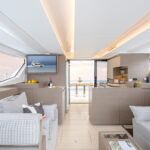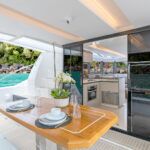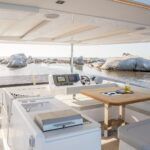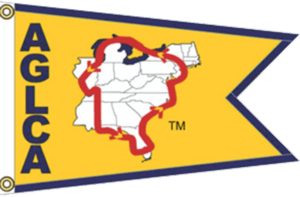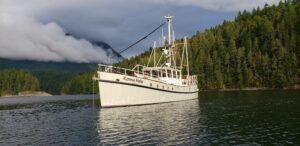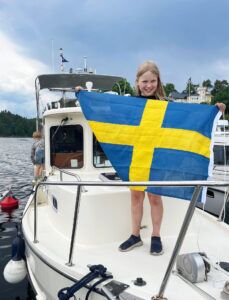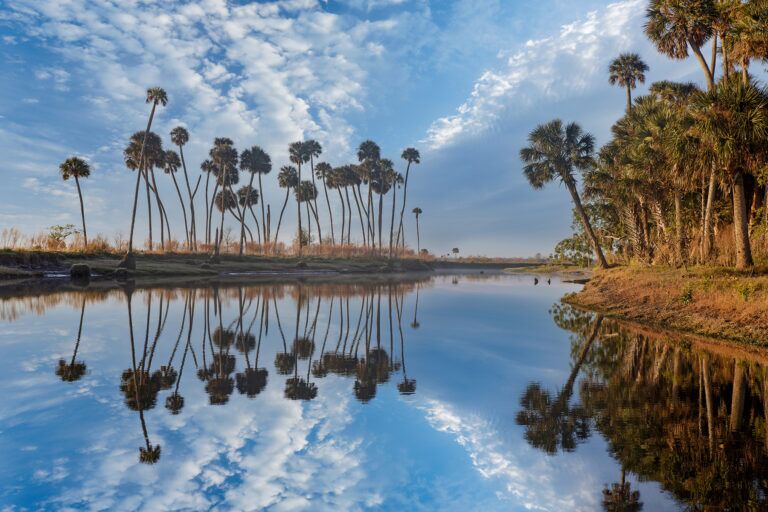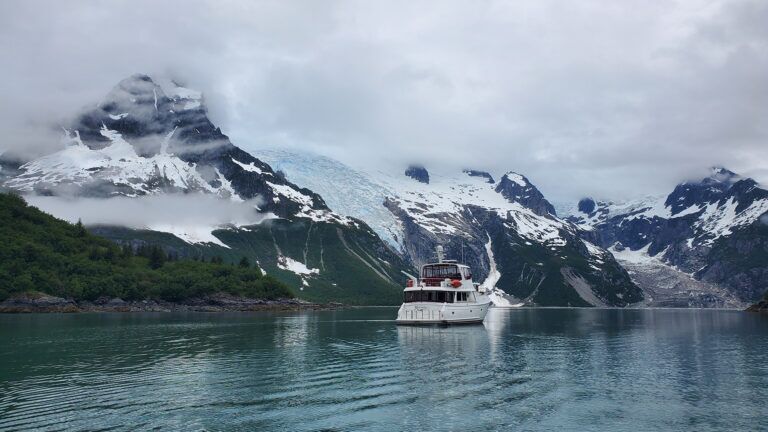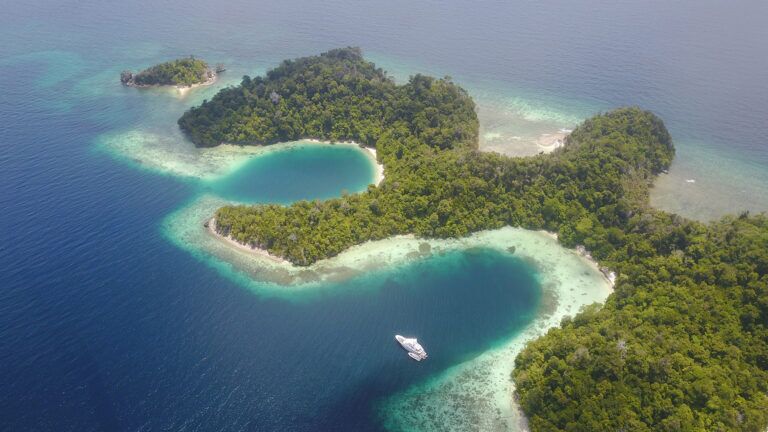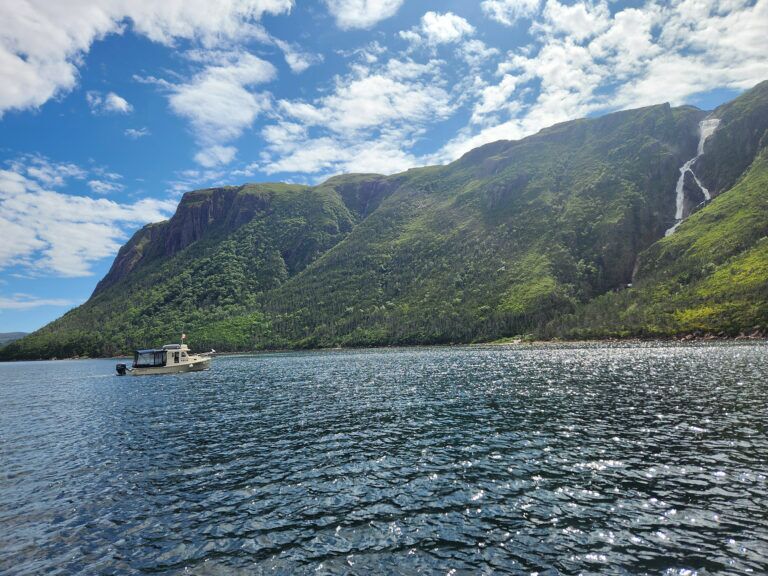We were almost there. The boat, a Moorings 464 powercat, skirted the coastline and then motored into a bay rumpled by a 15-knot breeze. The sea had a tightly spaced, 3- to 4-foot chop. Stationed on the flybridge, I could see looming peaks rising high above the city and water.
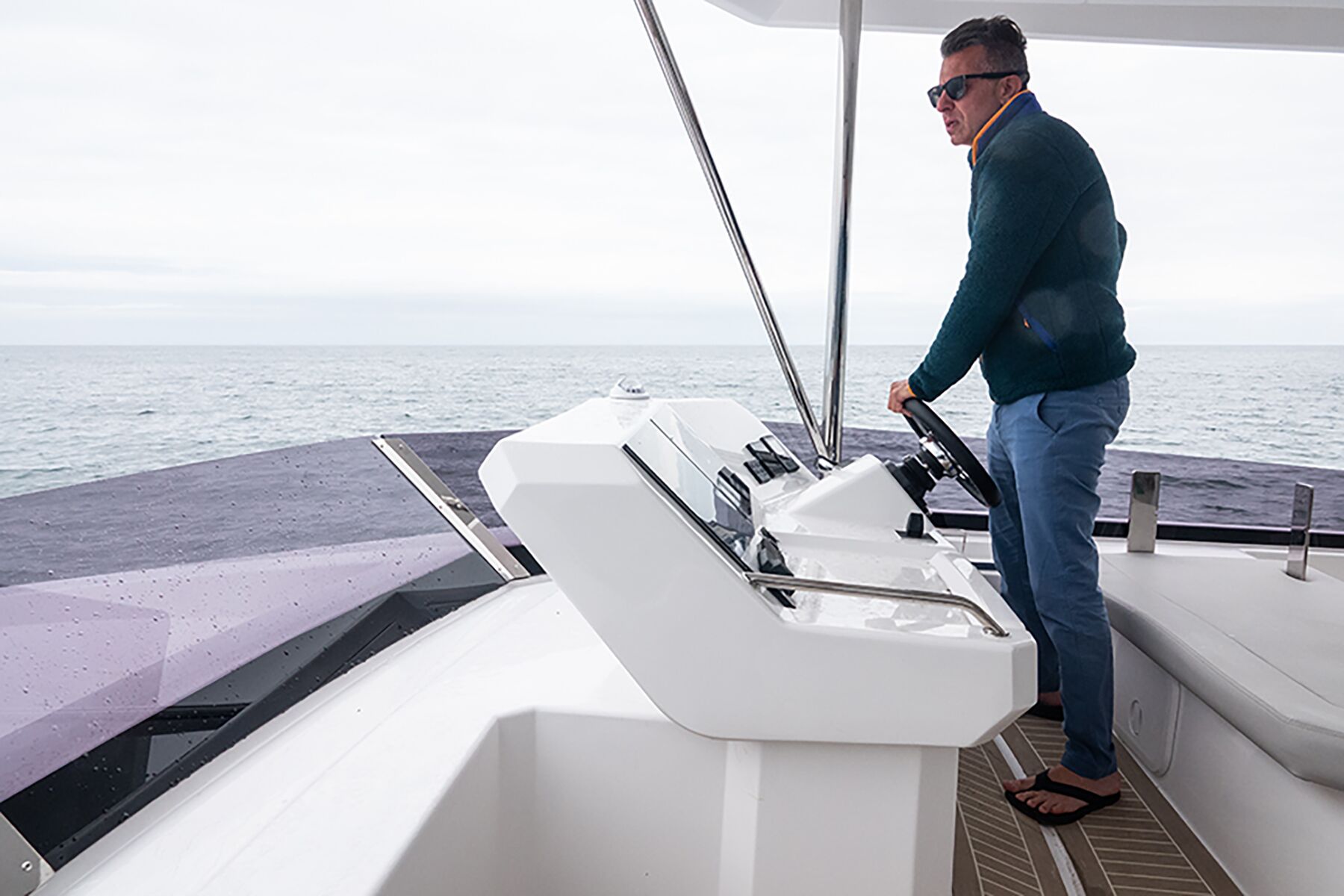
Less than 24 hours earlier, I had arrived in the shimmering city of Cape Town, South Africa, a metropolis set between the sienna mountains and the sea. Then, the city seemed to disappear like smoke into the marine layer after I boarded the big, beamy powercat with a team from Robertson and Caine, which builds Leopard Catamarans, including for Moorings charter fleets worldwide. The famous peaks of Table Mountain and Lion’s Head faded from focus as we motored out of the mainland’s lee. Soon, we were greeted by beam-to swells. Sets were breaking on the rocky shore of our destination, Robben Island.
Assaulted on two fronts, the 464 slowed to 10 knots but held her own as we inched closer to the island prison that held Nelson Mandela for 18 of his 27 incarcerated years. Robben Island looked bleak under slate-gray skies. It’s an otherwise unremarkable spit of land that has become a tourist destination, teaching the next generation about South Africa’s anti-apartheid movement. As we motored away, a flock of white ibis flew in formation overhead—a symbol of change and intelligence in many cultures, reminding me how far South Africa has come.
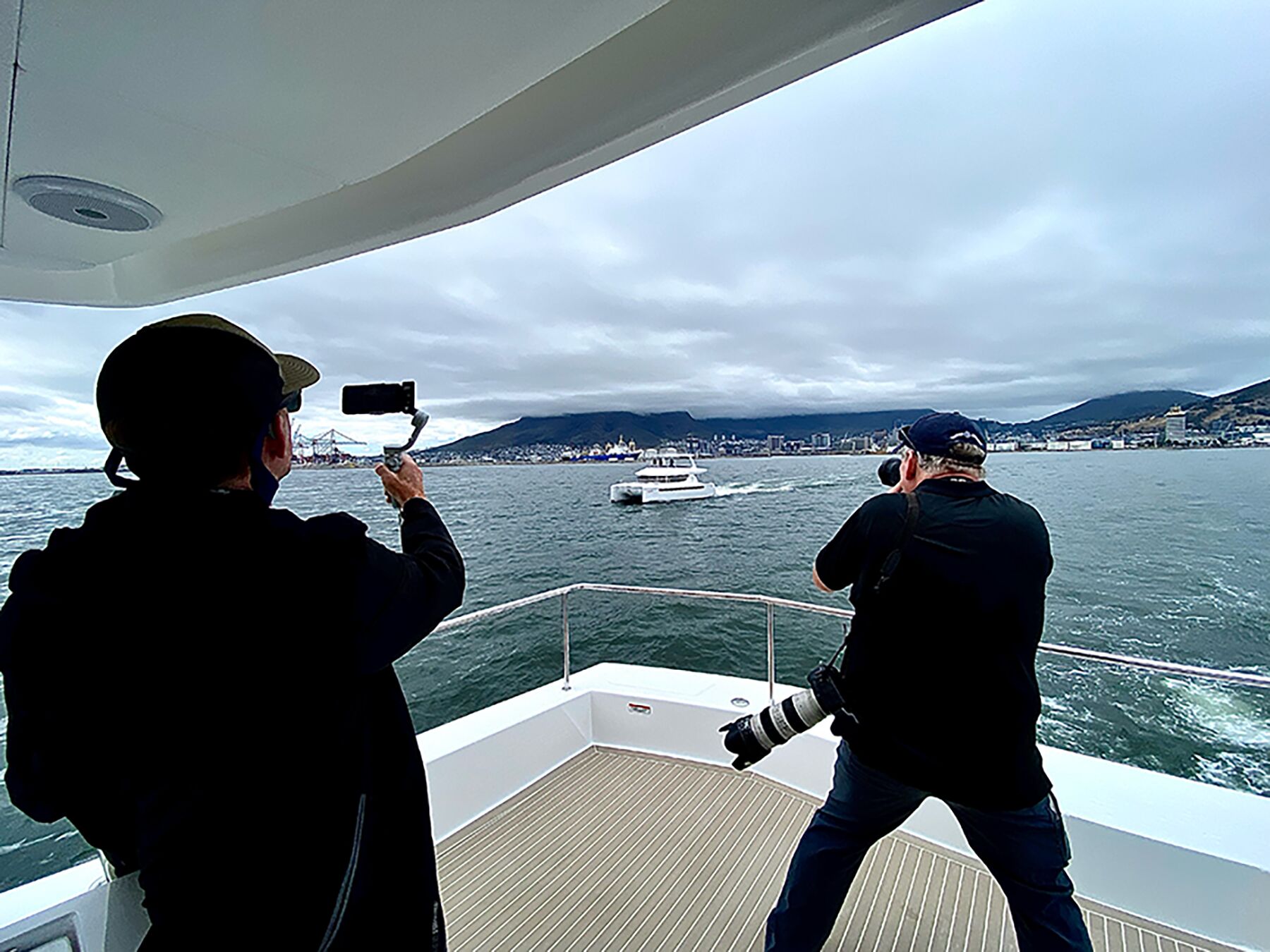
Today, the country is a fascinating place to visit, including staying at Cape Town’s Protea Breakwater Lodge, a 19th-century former garrison and prison the British built. The squat, brick building is in the heart of the city’s waterfront district near the modern Cape Town Stadium, constructed to host the 2010 FIFA World Cup.
The country’s electric-grid problems mean that twice per day, every day, the power goes out to Cape Town’s 3.4 million residents (locals use an app to keep track of the load shedding, and we must time our trips when the bascule bridges have power to let the tall powercats through) but generators are plentiful, especially at businesses including the factories where Robertson and Caine’s 2,000-person workforce is a remarkable powerhouse. With six facilities in Cape Town, the company is the largest catamaran builder in the Southern Hemisphere and in the top three on the planet.
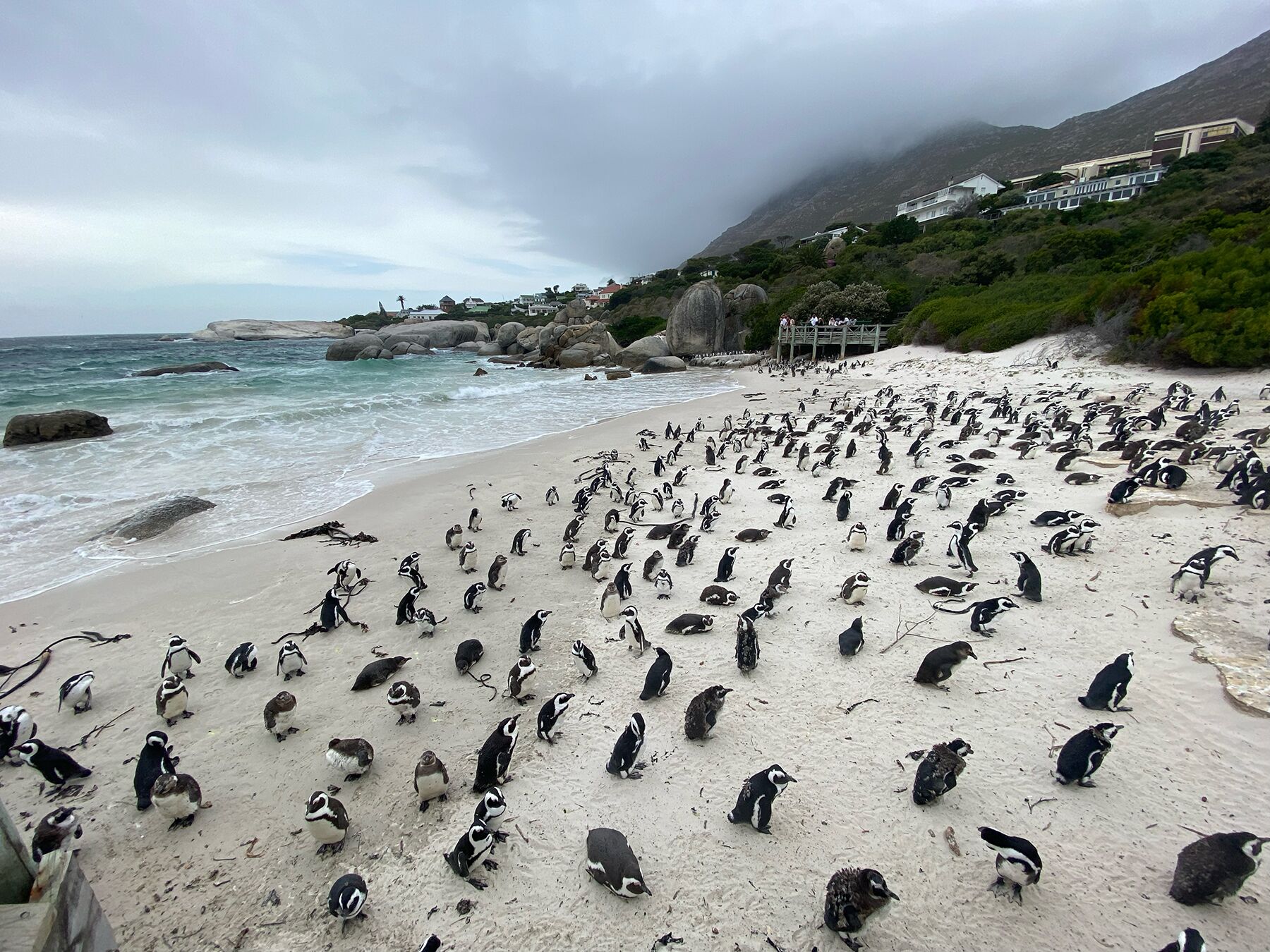
At the Robertson and Caine Woodstock facility, we came across a sailing cat minus its mast on a flatbed trailer. Poised for a middle-of-the-night sortie to the commissioning marina, the boat will get fitted for its mast, soft goods and more before being dismasted and loaded onto a transport ship, bound for Australia, the Seychelles, Tahiti, the United States or Europe. This early morning ballet, when the city is at its sleepiest, happens just about every day.
Woodstock is design headquarters for the company. “Cape Town is ideal testing grounds on new models,” said Technical Manager Donovan Thomas, adding that there’s “a good supply chain, an excellent port and skilled workforce with a lot of heritage and experience building.”
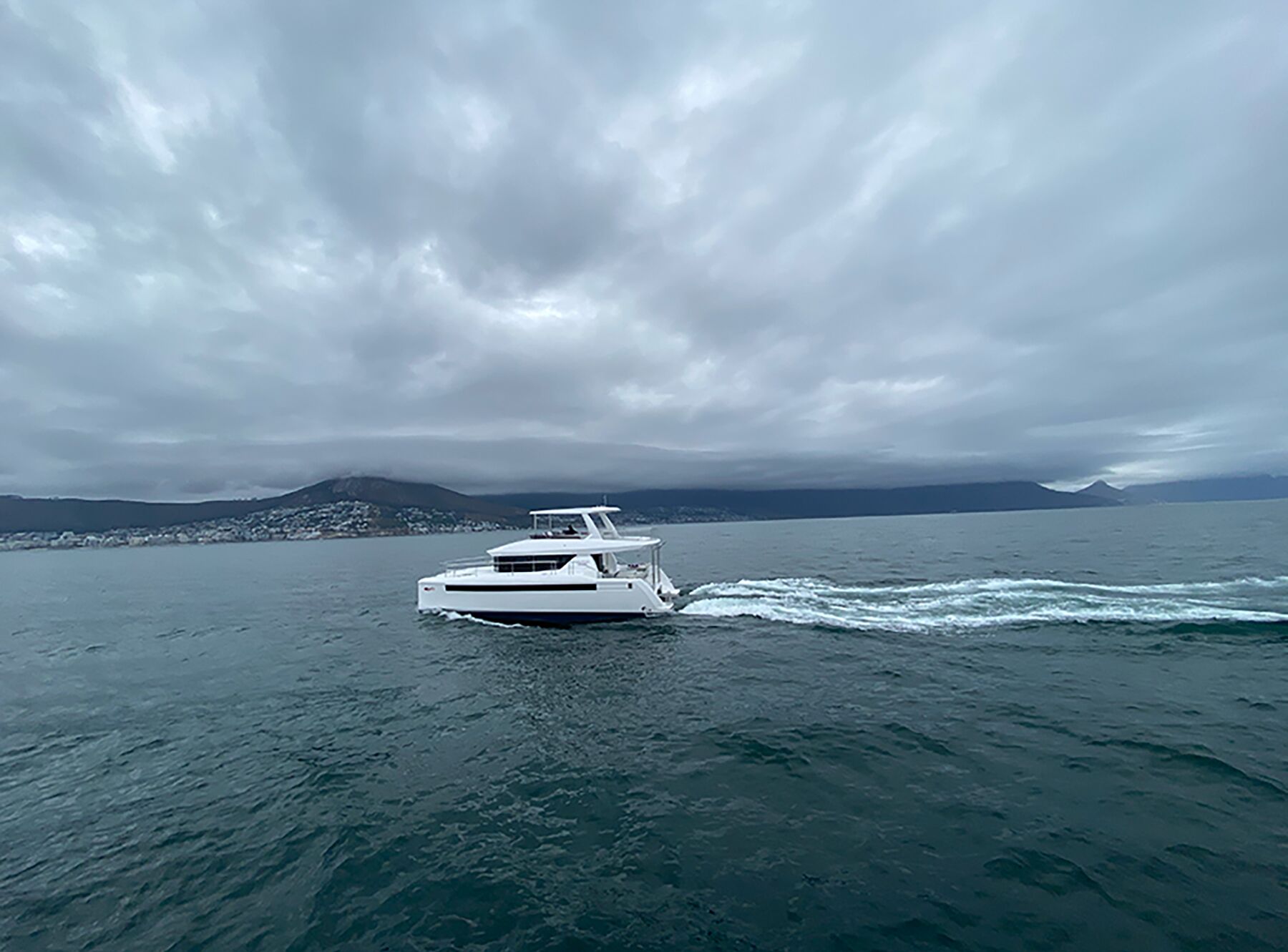
The company currently offers three power and three sail models, each with a six-year product cycle. The latest on the powercat side, the 40, we could see from a distance; we later got on board at the Miami International Boat Show (see “Built to Last” on page 52).
Like the other powercat models, the 46 and 53, the Leopard 40 will be put into service in Moorings charter fleets throughout the world.
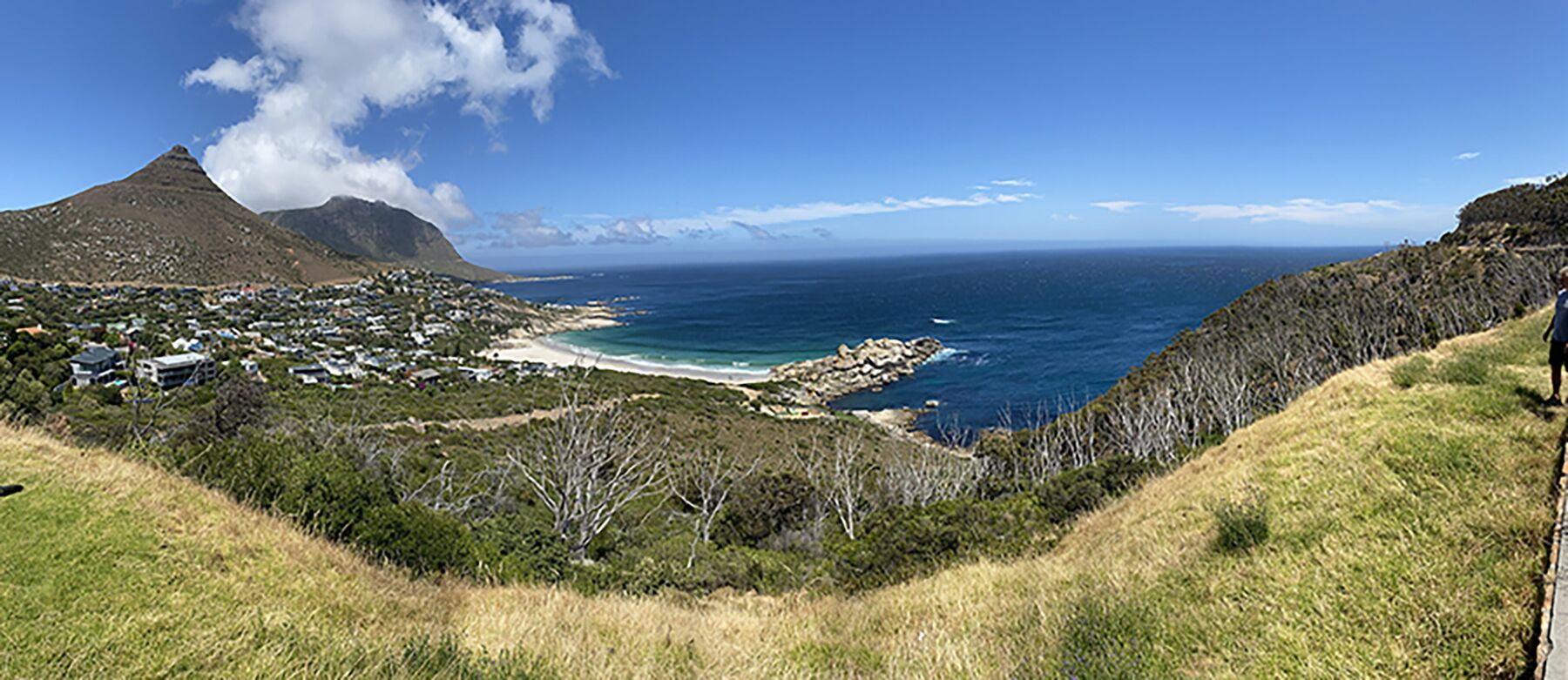
“The bucket of options is what separates a Moorings boat [from] a Leopard,” Thomas says. Given the sheer amount of boats the builder produces—Robertson and Caine is on track to build more than 210 boats in 2023—its plants are clean and well-organized. The production lines flow, from hulls and superstructures recently freed from molds to vessels ready for the brine.
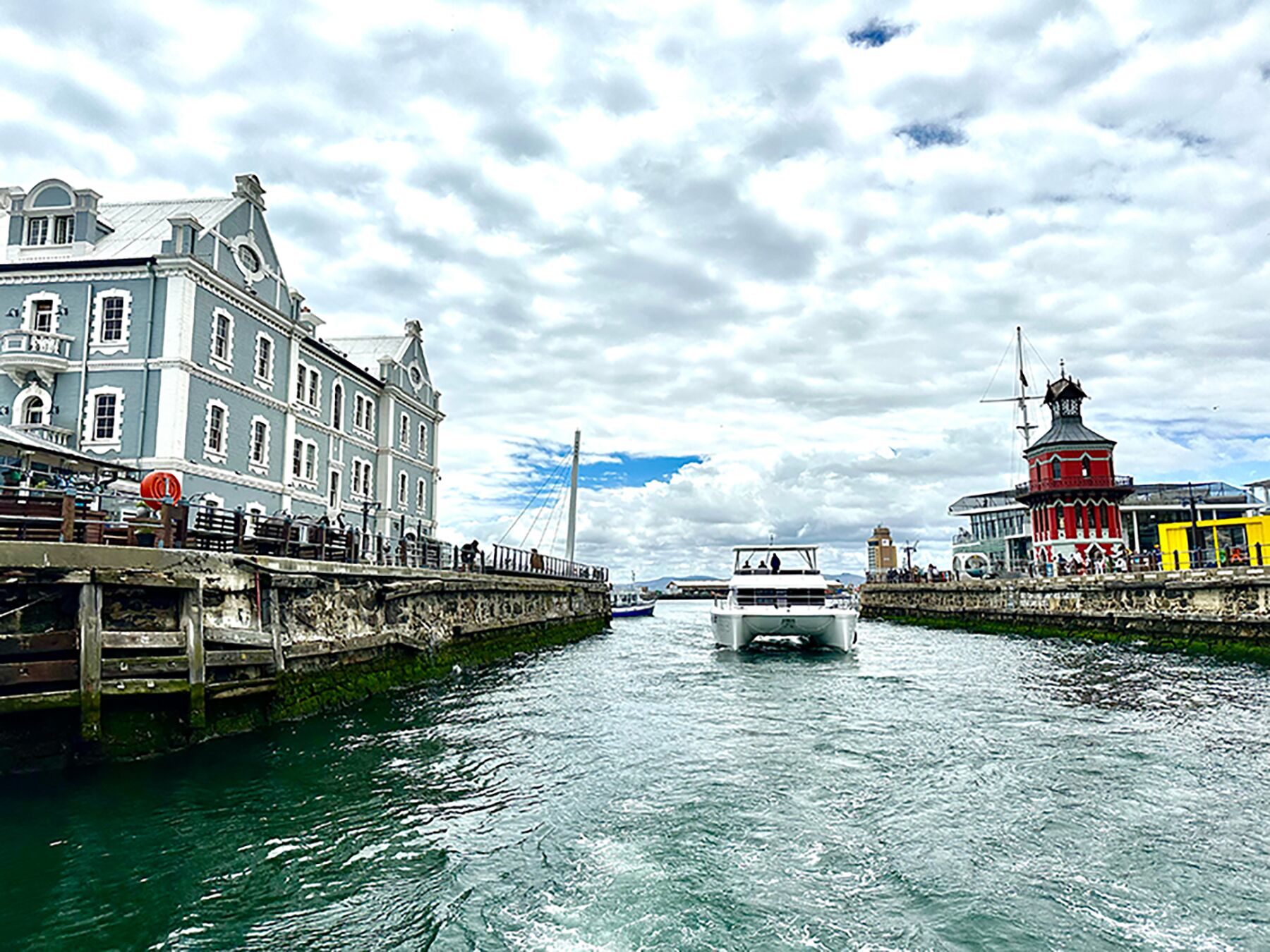
At the company’s Bolt Street plant, where the 45 Sail is built, hulls flanked the superstructures, and each workstation displayed detailed information about the builds. The mood was pure joy. From the beginning to the end of the production line, we saw smiling faces and heard music. There was reggae and rap, soul music and dance-hall hits. Workers danced a bit as they went about their work; trainees, wearing orange, seemed to enjoy the nurturing, fun atmosphere.
“Music helps with the tempo of the work. Everything is done by hand,” says Bolt Street Facility Manager Rotenda Randima, who has run Robertson and Caine’s busiest plant since 2018. Every four and a half days, a completed 45 is loaded onto a trailer, ready for its circuitous route to the salt water for final commissioning.
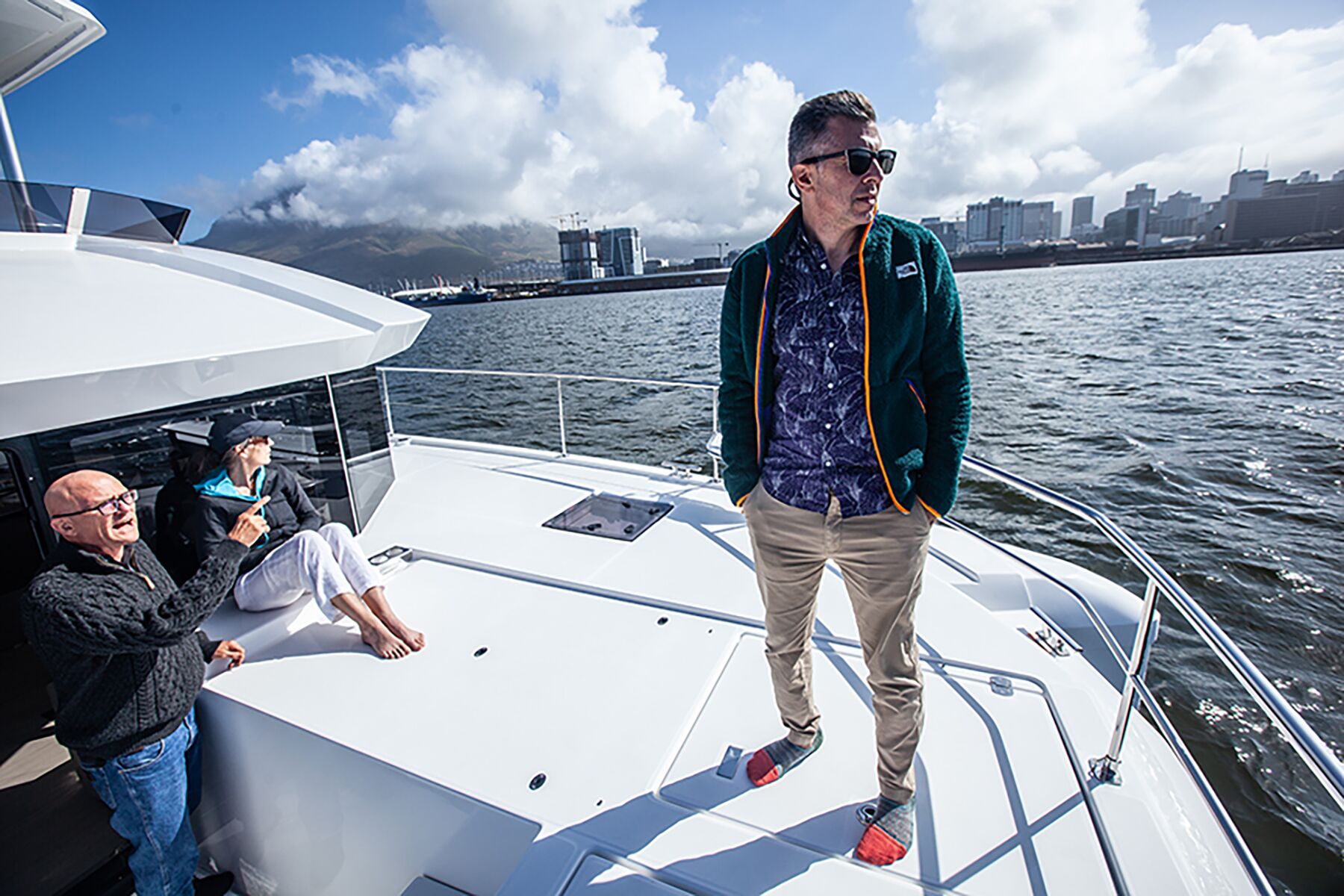
And what beautiful water it is. We stood on several of the region’s sheer cliffs overlooking a part of the South Atlantic where the wind never stops. We walked along Hout Bay Beach, where a dozen children played in the chop, and a band played on the quay. We lunched alfresco in Noordhoek, enjoying a fizzy Western Cape rosé. We visited the penguin colony at Boulders Beach, where the little birds, clumsy on the sand, blasted through the water like acrobats.
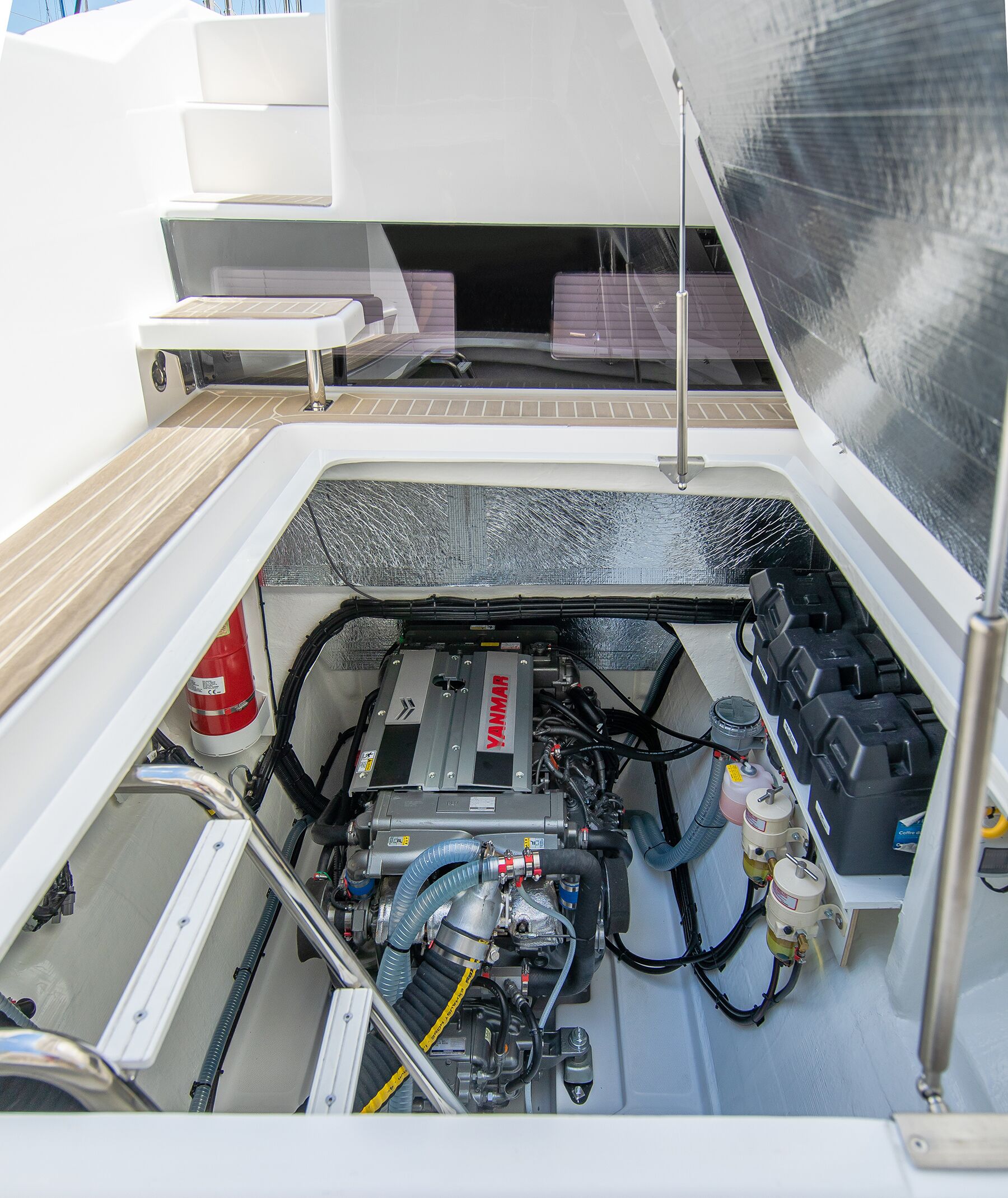
We also spent some time inland, driving on switchbacks over a mountain pass that dropped us into hundreds of thousands of acres of vineyards on our way to the 28,000-acre Inverdoorn Private Game Reserve on the South African savanna. The canyons here wouldn’t be out of place in the American Southwest, with forests of eucalyptus, evergreens and dry veld. Baboon families gathered by the roadside near signs that warned against feeding them. Another sign warned of leopards, which likely see us even if we don’t see them.
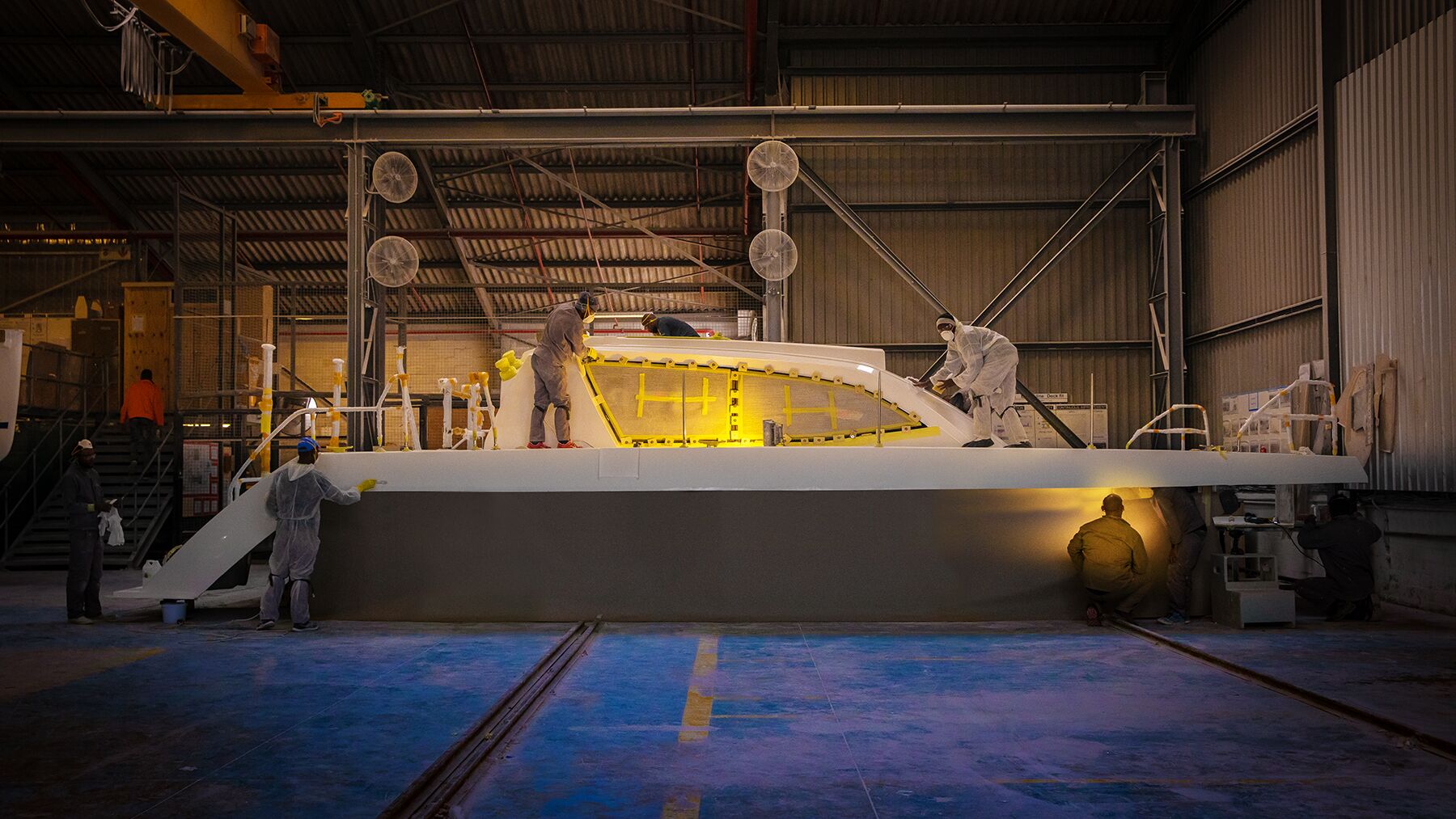
It’s a fun time, hopping in a Land Rover and scouting around to see three of Africa’s “big five” game animals: a lioness, black rhino and cape buffalo. Along the way, we marveled at giraffes, impalas, wildebeests and antelopes, and watched from a distance as lightning strikes and gray-black clouds careened toward us. Soon enough, we were blasted with 40-knot winds and sideways rain. Drenched, we visited the hippos for a fleeting glimpse before the muddy floodplain could strand us in the backcountry.
We found it much easier to battle the weather out on the water, at the helms of 46- and 53-foot Leopards. We made mincemeat of the chop in Table Bay, even as the skies turned from sunny and calm to windy and gray.
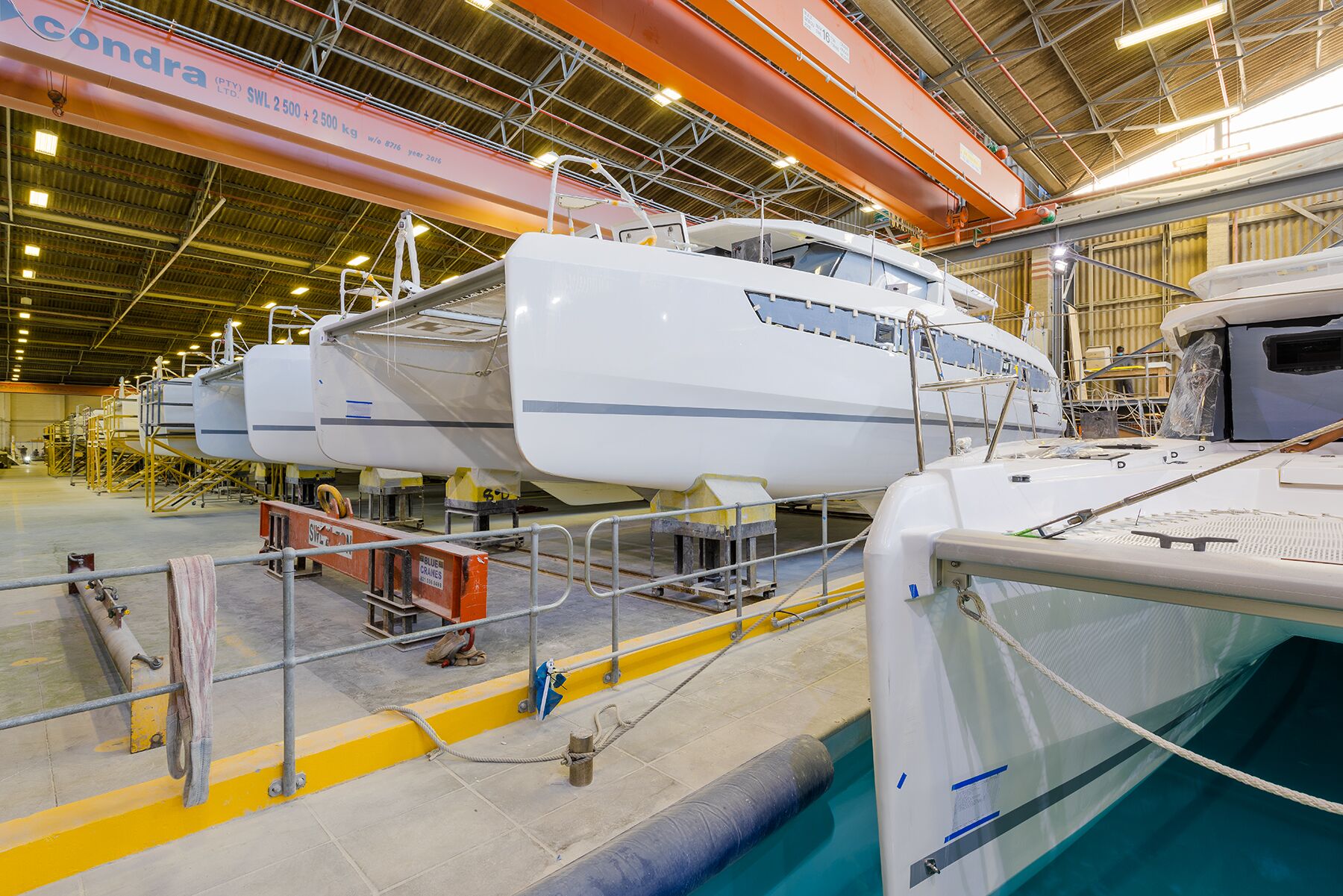
It was just another day in the Cape of Storms, a place where boats most definitely are built for adventure.
LEOPARD 40PC
LOA: 40ft.
Beam: 21ft. 8in.
Draft: 3ft. 7in.
Displacement: 30,488 lbs.
Fuel: 370 gal.
Water: 170 gal.
Power: 2x 250-hp Yanmar 4LV250
Optional power: 2x 320- or 370-hp Yanmar 8LV370
Info: leopardcatamarans.com
This article was originally published in the May/June 2023 issue.
Modified 6×6 Land Rovers await a voyage into the muddy backcountry.
A black rhino at the 28,000-acre Inverdoorn Game Reserve, about two hours north of Cape Town
A wildebeest and impala watch us, ready to bolt.
A lone lioness surveys the veldt.
The lower forward segments of both pontoons are sealed off by a bulkhead, creating a crumple zone that should keep the rest of the pontoon from flooding in case of a collision.
The en suite master stateroom occupies the entire starboard pontoon.
There is a lower helm for inclement weather and a door on centerline to access the foredeck.
With nearly 22 feet of beam, the salon and galley feel open and expansive.
The galley is located aft, an ideal spot for service to the cockpit.
Her flybridge is designed to entertain.


